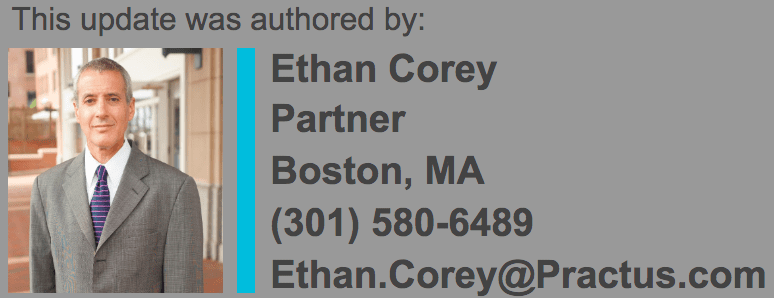On October 2, 2019, the Division of Investment Management (IM) of the Securities and Exchange Commission (SEC) issued disclosure guidance (so-called accounting and disclosure information) addressing the accuracy of performance, fee and expense figures presented in prospectuses.1 The guidance encourages registrants to verify the accuracy of performance and fee disclosures before those disclosures are filed with the SEC and provided to investors.
Performance Presentations
- Failing to Reflect Sales Loads: The average annual total returns table in the prospectus must reflect the deduction of the maximum sales load at the times, in the amounts and under the terms disclosed in a fund’s prospectus. However, IM staff found funds with maximum initial loads ranging from 5.00% to 5.75% that failed to deduct those loads, which caused them to overstate their performance.
- Additional Issues:
- Funds showing negative performance as positive performance;
- Transposing the performance of fund classes (e.g., showing Class A performance as Class B performance and vice versa); and
- Transposing the performance of multiple benchmark indices.
Fees and Expenses
- Incorrectly Showing Net Expenses that Exceed Gross Expenses. In instances where an adviser is recouping fees previously waived or expenses previously reimbursed, some funds are showing the amount recouped as an addition to gross expenses. IM reminded funds that net expenses can be shown in addition to gross expenses only if there is a reduction in gross expenses. Amounts recouped showed be included in gross expenses.
- Failing to Disclose Acquired Fund Fees and Expenses. If a fund invests in other funds, the fund’s fee table must show the expenses of the fund’s investments in those other funds. IM discovered several instances when funds failed to reflect the correct amount of the acquired funds’ fees and expenses in their fee tables.
- Failing to Correctly Calculate the Expense Example. IM found three different types of errors that occurred in the expense example:2
- arithmetic errors;
- the failure to reflect fee waivers only for the term of the waiver; and
- the failure to include certain categories of expenses (e.g., expenses of funds in which the fund invests).
Other Filing Errors.
Mutual funds and exchange-traded funds must tag their risk/return summaries in XBRL. Some funds:
- use incorrect tags to tag the risk/return summaries;
- enter the data incorrectly; or
- associate the tagged information with the wrong fund or class.
Conclusion
The IM staff reminded registrants of their responsibility “for ensuring the accuracy of their disclosures.”3 Interestingly, the IM staff did not remind registrants of their heightened liability for misstatements and omissions in documents filed with the SEC. Given the heightened liability for misstatements and omissions in documents filed with the SEC, IM’s reminder to registrants that they are responsible for ensuring the accuracy of their disclosures is timely.
1Performance and Fee Issues, Division of Investment Management Accounting and Disclosure Information 2019-09 (Oct. 2, 2019) (ADI 2019-09) (https://www.sec.gov/investment/accounting-and-disclosure-information/performance/adi-2019-09-performance-and-fee-issues) (visited Oct. 7, 2019).
2 The expense example is a hypothetical example that shows the estimated expenses that an investor will pay for investing in a fund over different time periods. Id. (citations omitted)
3 Id.






